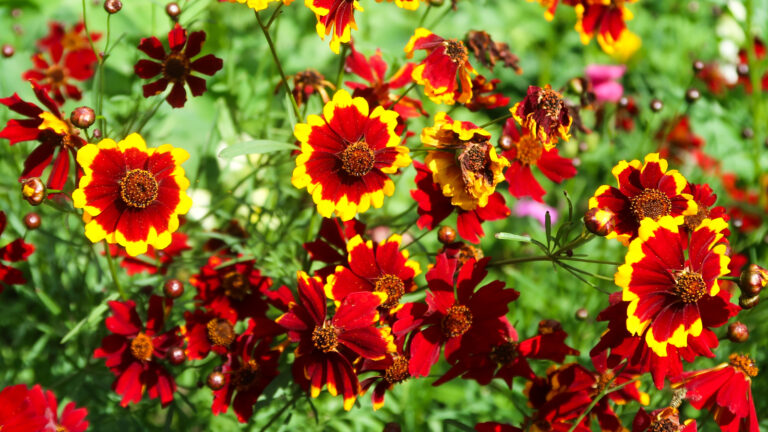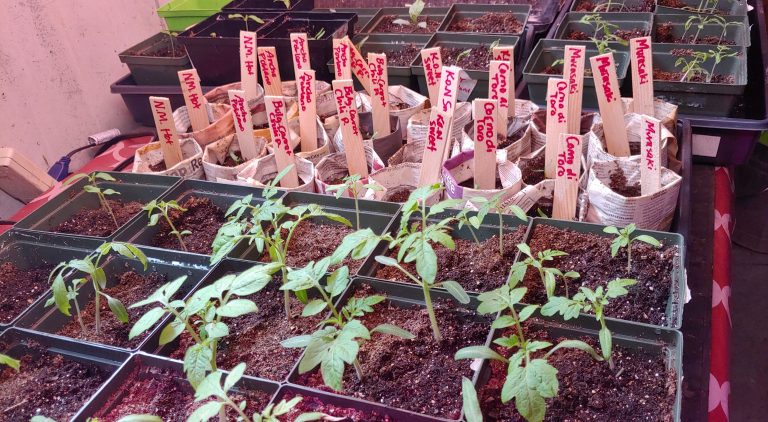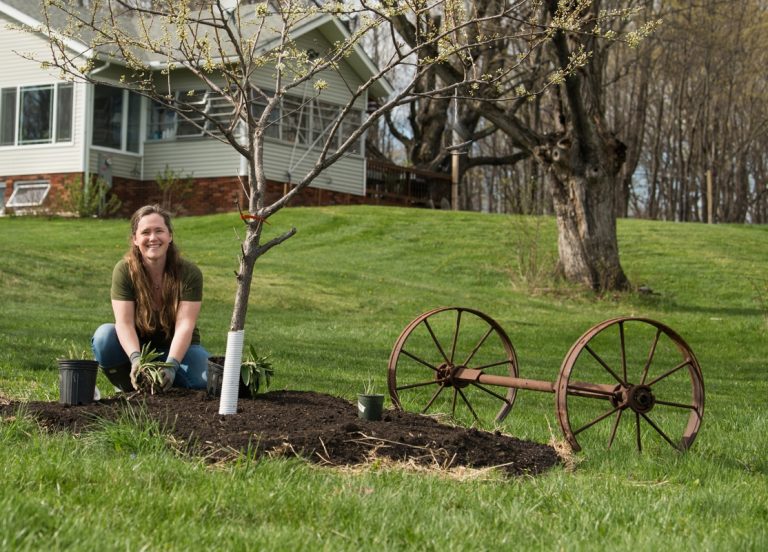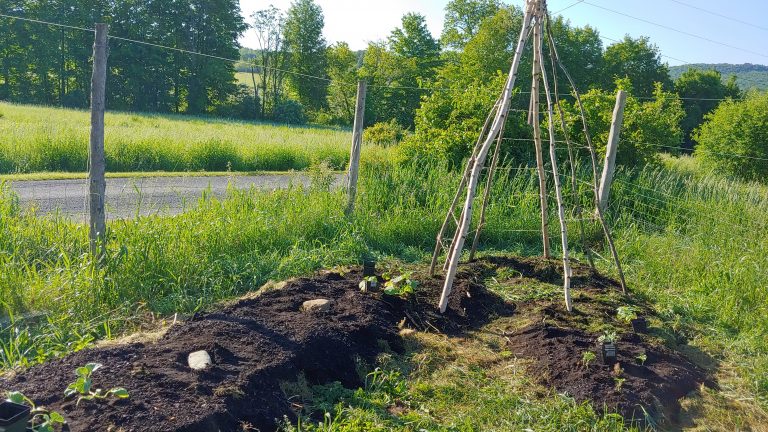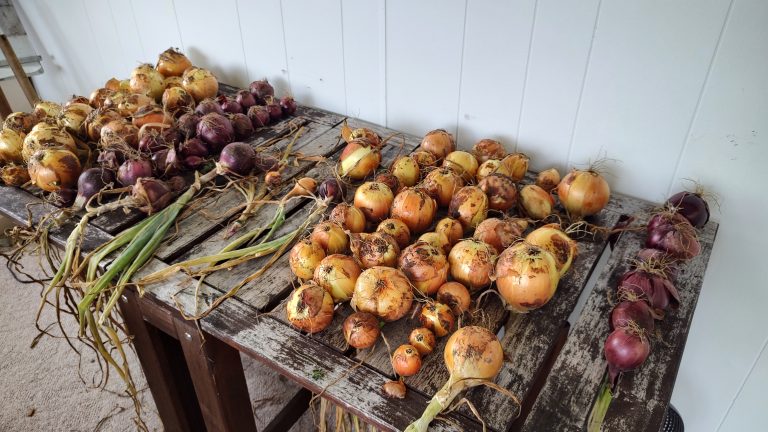This post may contain affiliate links.
Spotting a thirsty garden is easy – dry soil, droopy plants, and sluggish growth are telltale signs. But once in rescue mode, how do you ensure you’ve given it just the right amount of water?
It turns out that there are some watering best practices that strike the perfect balance. These guidelines ensure your plants get the hydration they need without drowning and ensure unnecessary water waste.
In this guide, we’re here to answer all your questions about the practical ins and outs of watering your garden. Let’s make sure your plants stay happy and hydrated!
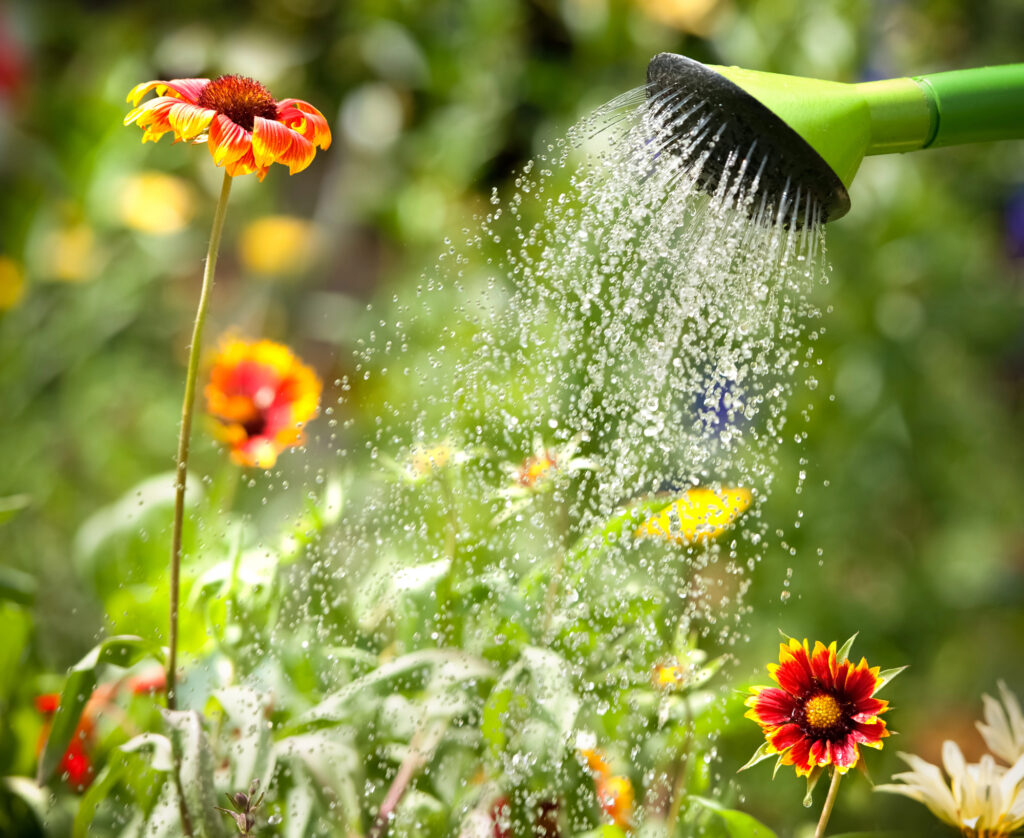
How To Tell If Your Garden Needs Watering
The rule of thumb is to water your plants when Mother Nature isn’t delivering enough rain, especially during dry, hot spells. However, the nuanced approach involves considering factors like how long your plants have been in the ground, their appearance, and the soil’s moisture retention.
Here are a few other ways that you can tell:
- Wilted, tired-looking leaves are a clear signal that they need water. It’s almost like reading human body language; you can tell when someone is “thirsty,” similar to how you can tell when plants are wilting.
- Newly transplanted seedlings require more frequent watering than established plants, which can weather nature’s fluctuations better.
- If the soil looks dry, cracked, or quickly dries out after watering, it’s time for a good soak. Well-hydrated plants should leave the soil moist about 3-4 inches down.
Rather than sticking to a fixed watering schedule, it’s better to keep an eye on your plants and soil to determine when they genuinely need hydration.
How to Water Your Garden

There are a few different ways to water your garden. Each watering method has its advantages and disadvantages, and the choice depends on factors such as garden size, plant type, and personal preference. The information emphasizes the importance of avoiding wasteful practices, such as overwatering with sprinklers or using inefficient hoses for drip irrigation.
1. Sprinkler System:
- Pros: Easy to set up and covers a large area.
- Cons: Distribute water lightly, leading to potential overwatering and wasted water. Up to half of the water may land where it’s not needed.
2. Watering Can:
- Pros: Provides targeted watering for individual plants. Ideal for smaller gardens or when planting new seedlings.
- Cons: Can be exhausting for large gardens as it requires constant refilling.
3. Watering Wand Attachment on Hose:
- Pros: Combines the precision of a watering can with the convenience of a hose. Efficiently spreads water in multiple streams without the need to carry water around. Allows for deeper and faster watering compared to spray nozzles.
- Cons: None mentioned in the provided information.
4. Drip Irrigation System with Drip Hoses:
- Pros: Advanced watering method. Provides a consistent and controlled flow of water directly to the plants’ roots. Ideal for larger gardens.
- Cons: Requires upfront investment in a durable drip system. Garden layout must be designed around the drip system to avoid unnecessary watering in certain areas. Some hoses may not withstand the test of time.
What is the Best Method for Watering Plants
When it comes to watering your garden, the choice of tools matters, and our go-to is a watering wand attached to a hose. This wand mimics a watering can by dispersing water in multiple streams. Attached to a hose, it eliminates the need to carry water around, making the process more efficient.
Most watering wands also provide a robust water stream, allowing for deeper and faster watering compared to spray nozzles.
With regards to watering cans, watering cans allow for more precision, but it can be laborious for large gardens. Still, if your garden is manageable, a watering can is a better option than a sprinkler, especially for new seedlings.

As far as sprinklers, it might seem convenient to set up a “set it and forget it” sprinkler system, but it’s not the most effective way to water your veggies. Sprinklers cover a large area lightly, often wasting water as a significant portion of lands where you don’t have plants. This method can result in overwatering and unnecessary water waste.
Lastly, for a more advanced approach, consider setting up your irrigation system with drip hoses. A word of caution: not all hoses are durable, so invest in a quality drip system. Additionally, plan your garden layout around the drip system to avoid watering areas unnecessarily, similar to the issues seen with sprinklers.
What time of day should I water my garden?
Early morning is the best time to water your garden, followed by evening after the temperature falls. This is because the midday heat of the sun will evaporate water poured onto the surface before it has a chance to be absorbed into the soil.
Morning is better than night because your plants will draw on the water you add to the soil throughout the day. When you water at night, the water may sit there until the plants “wake up” in the morning and are ready to use it. This is ok, but not ideal, as the water that sits can sometimes cause moisture to build up or the leaves of plants to wilt.
How much water does my garden need?
You should water enough that the soil would still feel moist about 2-4 inches below the surface. This is more water than most people are inclined to provide for their plants.
Water-loving veggies like tomatoes can sometimes need a 30-second stream from our watering wand before they are fully supplied with the water they need for a hot summer day.
The same can be said for potted plants – you might need 1/2 to 3/4 gallon of water in a large 12-15 inch planter for it to be fully watered. It is better to provide this amount every few days than to water just a cup or two every day because the water will soak down further into the soil to supply the roots of your plant.
Other topics you might like:
- 20 Best Plants for Container Gardening
- How to Improve Clay Soil for Gardening
- How to Start a Herb Garden from Scratch
Like any other component of gardening, you will learn more and more about how to water your own garden space effectively. You’ll make mistakes, miss days, and some plants won’t make it. But eventually, you’ll put all of your knowledge to use to water your garden in the most effective ways.
But the biggest message is this – listen to your plants and soil (with your eyes and hands); they will tell you what you need to know!
Carrie Williams Howe is an educational leader by day and an aspiring homesteader by night and weekend. She lives on a small homestead in Vermont with her husband, two children, and a rambunctious border collie. She blogs about her family's homestead life at The Happy Hive.


